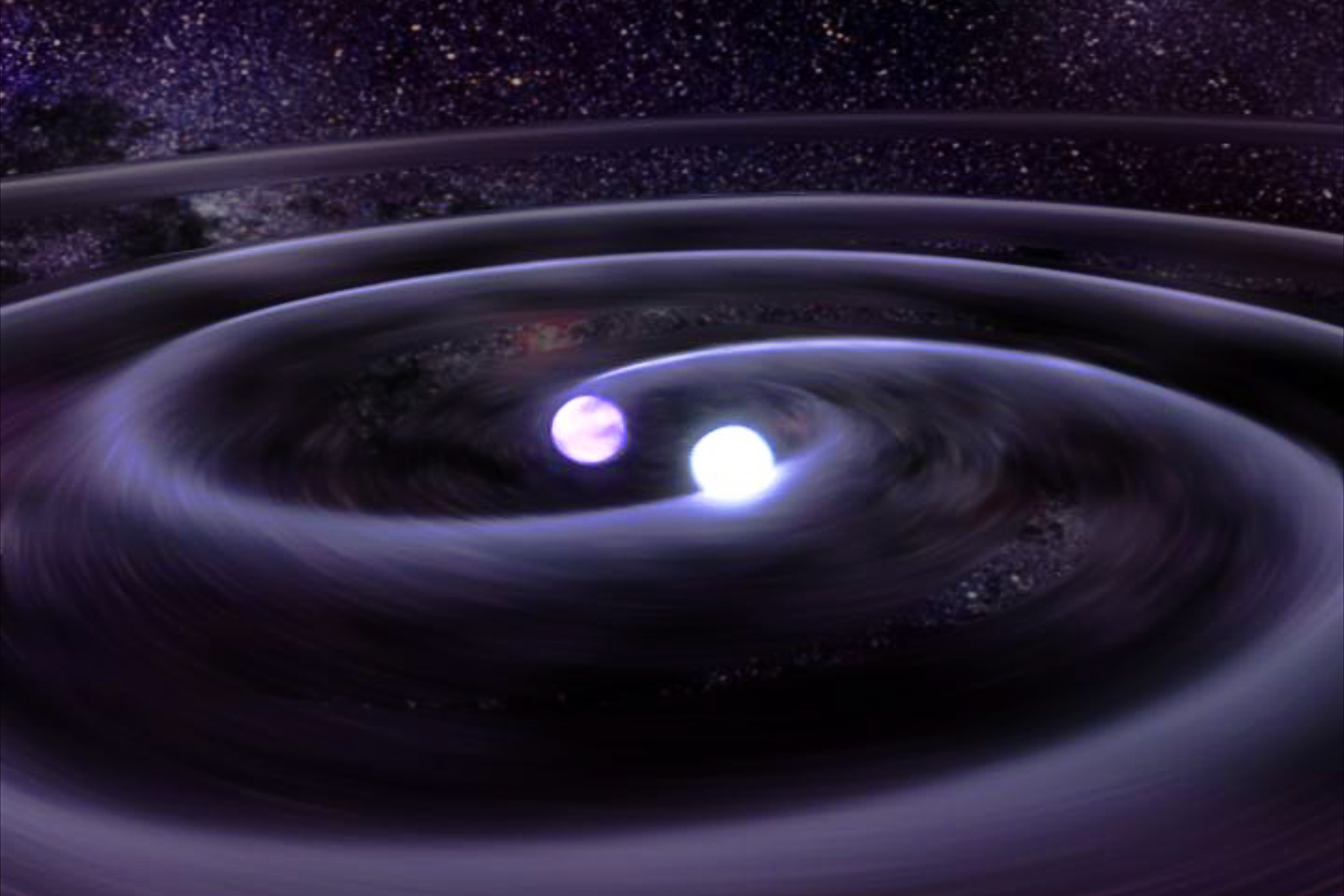Scientists at NASA are one step closer to directly detecting a gravitational wave. The well-known theory of relativity by Albert Einstein was first to propose the release of gravitational waves from objects when they exhibit a change in their speed or direction. When the objects involved are super massive black holes, their gravitational waves will distort space and time. These gravitational waves are released when the supermassive black holes spiral around each other and fuse into one.
While we have never been able to directly detect these waves, scientists at NASA have developed a method for studying these mergers of black holes. This method uses a kind of star called a pulsar and has been dubbed pulsar timing arrays.
Pulsars are the remains of ancient stars that have exploded and left behind their core. This core releases beams of radio waves that are detected and recorded to within a tenth of a microsecond by telescopes on Earth. The timing of these radio waves is so precise that their accuracy can be compared to that of the atomic clock.
As gravitational waves pass through these pulsars, they expand and shrink rapidly which changes the time of their arrival on Earth significantly enough to be detectable by us. “The gravitational waves cause the space between Earth and pulsars to stretch and squeeze,ÔÇØ said Sarah Burke-Spolaor, contributor to research conducted at NASAÔÇÖs Jet Propulsion Lab (JPL) in Pasadena, California.
The most recent findings were made using a cluster of 20 pulsars and the Parkes radio telescope in Australia, which is owned by the Commonwealth Scientific and Industrial Research Organization (CSIRO). Using the data collected from the telescope, researchers can then piece together a rough idea of the gravitational activity.
Twenty years worth of data has been collected by the Parkes Pulsar Timing Array (PPTA) and an earlier CSIRO project.  In just ten more years, researchers at the PPTA are confident they will be able to directly detect a gravitational wave which will be an enormous step forward for the field of gravitational astrophysics.
Work is currently underway with NASAÔÇÖs deep space network to provide a new platform for the study of pulsars. NASAÔÇÖs deep space network is a system of large antennas at various locations around the globe and is used to communicate with deep space satellites. Researchers at JPL are currently developing the pulsar timing capabilities of this deep space network so it can be used to record pulsar activity during gaps in its tracking schedule.
ÔÇ£Right now, the focus in the pulsar-timing array communities is to develop more sensitive technologies and to establish long-term monitoring programs of a large ensemble of the pulsars,ÔÇØ said Walid Majid, the principal investigator of the Deep Space Network pulsar-timing program at JPL.
Ben Clark





Add Comment